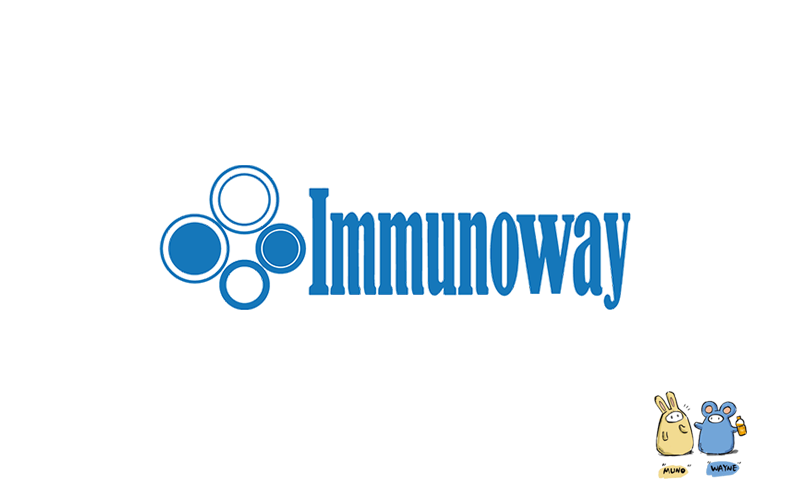
Catalog: YN1279
Size
Price
Status
Qty.
200μL
$450.00
In stock
0
100μL
$280.00
In stock
0
40μL
$150.00
In stock
0
Add to cart


Collected


Collect
Main Information
Target
2A5G
Host Species
Rabbit
Reactivity
Human, Mouse
Applications
WB, ELISA
MW
57kD (Observed)
Conjugate/Modification
Unmodified
Detailed Information
Recommended Dilution Ratio
WB 1:500-2000; ELISA 1:5000-20000
Formulation
Liquid in PBS containing 50% glycerol,0.5% BSA and 0.02% sodium azide.
Specificity
2A5G Polyclonal Antibody detects endogenous levels of protein.
Purification
The antibody was affinity-purified from rabbit antiserum by affinity-chromatography using epitope-specific immunogen.
Storage
-15°C to -25°C/1 year(Do not lower than -25°C)
Concentration
1 mg/ml
MW(Observed)
57kD
Modification
Unmodified
Clonality
Polyclonal
Isotype
IgG
Related Products
Antigen&Target Information
Immunogen:
Synthesized peptide derived from human protein . at AA range: 360-440
show all
Specificity:
2A5G Polyclonal Antibody detects endogenous levels of protein.
show all
Gene Name:
PPP2R5C KIAA0044
show all
Protein Name:
Serine/threonine-protein phosphatase 2A 56 kDa regulatory subunit gamma isoform (PP2A B subunit isoform B'-gamma) (PP2A B subunit isoform B56-gamma) (PP2A B subunit isoform PR61-gamma) (PP2A B subunit isoform R5-gamma) (Renal carcinoma antigen NY-REN-29)
show all
Background:
The product of this gene belongs to the phosphatase 2A regulatory subunit B family. Protein phosphatase 2A is one of the four major Ser/Thr phosphatases, and it is implicated in the negative control of cell growth and division. It consists of a common heteromeric core enzyme, which is composed of a catalytic subunit and a constant regulatory subunit, that associates with a variety of regulatory subunits. The B regulatory subunit might modulate substrate selectivity and catalytic activity. This gene encodes a gamma isoform of the regulatory subunit B56 subfamily. Alternatively spliced transcript variants encoding different isoforms have been identified. [provided by RefSeq, Jul 2008],
show all
Function:
Function:The B regulatory subunit might modulate substrate selectivity and catalytic activity, and also might direct the localization of the catalytic enzyme to a particular subcellular compartment.,PTM:Isoform Gamma-3 is phosphorylated on serine residues while isoform Gamma-1 is not.,similarity:Belongs to the phosphatase 2A regulatory subunit B56 family.,subunit:PP2A consists of a common heterodimeric core enzyme, composed of a 36 kDa catalytic subunit (subunit C) and a 65 kDa constant regulatory subunit (PR65 or subunit A), that associates with a variety of regulatory subunits. Proteins that associate with the core dimer include three families of regulatory subunits B (the R2/B/PR55/B55, R3/B''/PR72/PR130/PR59 and R5/B'/B56 families), the 48 kDa variable regulatory subunit, viral proteins, and cell signaling molecules. Interacts with SGOL1.,tissue specificity:Highest levels in heart, skeletal muscle and brain. Lower levels in pancreas, kidney, lung and placenta. Very low levels in liver.,
show all
Cellular Localization:
Nucleus. Chromosome, centromere.
show all
Tissue Expression:
Highest levels in heart, skeletal muscle and brain. Lower levels in pancreas, kidney, lung and placenta. Very low levels in liver.
show all
Research Areas:
>>mRNA surveillance pathway ;
>>Sphingolipid signaling pathway ;
>>Oocyte meiosis ;
>>PI3K-Akt signaling pathway ;
>>AMPK signaling pathway ;
>>Adrenergic signaling in cardiomyocytes ;
>>Dopaminergic synapse ;
>>Human papillomavirus infection
>>Sphingolipid signaling pathway ;
>>Oocyte meiosis ;
>>PI3K-Akt signaling pathway ;
>>AMPK signaling pathway ;
>>Adrenergic signaling in cardiomyocytes ;
>>Dopaminergic synapse ;
>>Human papillomavirus infection
show all
Signaling Pathway
Cellular Processes >> Cell growth and death >> Cell cycle
Organismal Systems >> Immune system >> T cell receptor signaling pathway
Organismal Systems >> Circulatory system >> Adrenergic signaling in cardiomyocytes
Organismal Systems >> Nervous system >> Dopaminergic synapse
Environmental Information Processing >> Signal transduction >> Sphingolipid signaling pathway
Environmental Information Processing >> Signal transduction >> PI3K-Akt signaling pathway
Environmental Information Processing >> Signal transduction >> AMPK signaling pathway
Reference Citation({{totalcount}})
Catalog: YN1279
Size
Price
Status
Qty.
200μL
$450.00
In stock
0
100μL
$280.00
In stock
0
40μL
$150.00
In stock
0
Add to cart


Collected


Collect
Recently Viewed Products
Clear allPRODUCTS
CUSTOMIZED
ABOUT US
Toggle night Mode
{{pinfoXq.title || ''}}
Catalog: {{pinfoXq.catalog || ''}}
Filter:
All
{{item.name}}
{{pinfo.title}}
-{{pinfo.catalog}}
Main Information
Target
{{pinfo.target}}
Reactivity
{{pinfo.react}}
Applications
{{pinfo.applicat}}
Conjugate/Modification
{{pinfo.coupling}}/{{pinfo.modific}}
MW (kDa)
{{pinfo.mwcalc}}
Host Species
{{pinfo.hostspec}}
Isotype
{{pinfo.isotype}}
Product {{index}}/{{pcount}}
Prev
Next
{{pvTitle}}
Scroll wheel zooms the picture
{{pvDescr}}



















